Some time back, when I was researching an article about the Letort spring run in Pennsylvania, I stumbled across something that piqued my interest.
It was about a theory that some of the Browns in the Letort spring run, were known as “movers”. It was the detail that went along with this that piqued my interest. The Letort was first stocked with Loch Leven browns. Later it was stocked with German Browns (Von Behr’s as they were called back then). The Letort regulars started to comment when they caught a fish, on whether it was a Loch Leven or a Von Behr. This was interesting to me because it is a conversation we always have about Browns on the upper uMngeni River here in South Africa. We all know, as the flyfishers of Carlisle, Pennsylvania must have done, that the genetics have become mixed, and that it is a bit fanciful to classify each fish as one or the other.
My mates and I who fish the uMngeni try anyway. We look at pictures on phones in pubs and coffee shops, and say things like “Ooh…definitely a Loch Leven that one”. Others are butter yellow, with plentiful red spots, and are surely Von Behrs, but most make us pause and scratch our heads a bit.
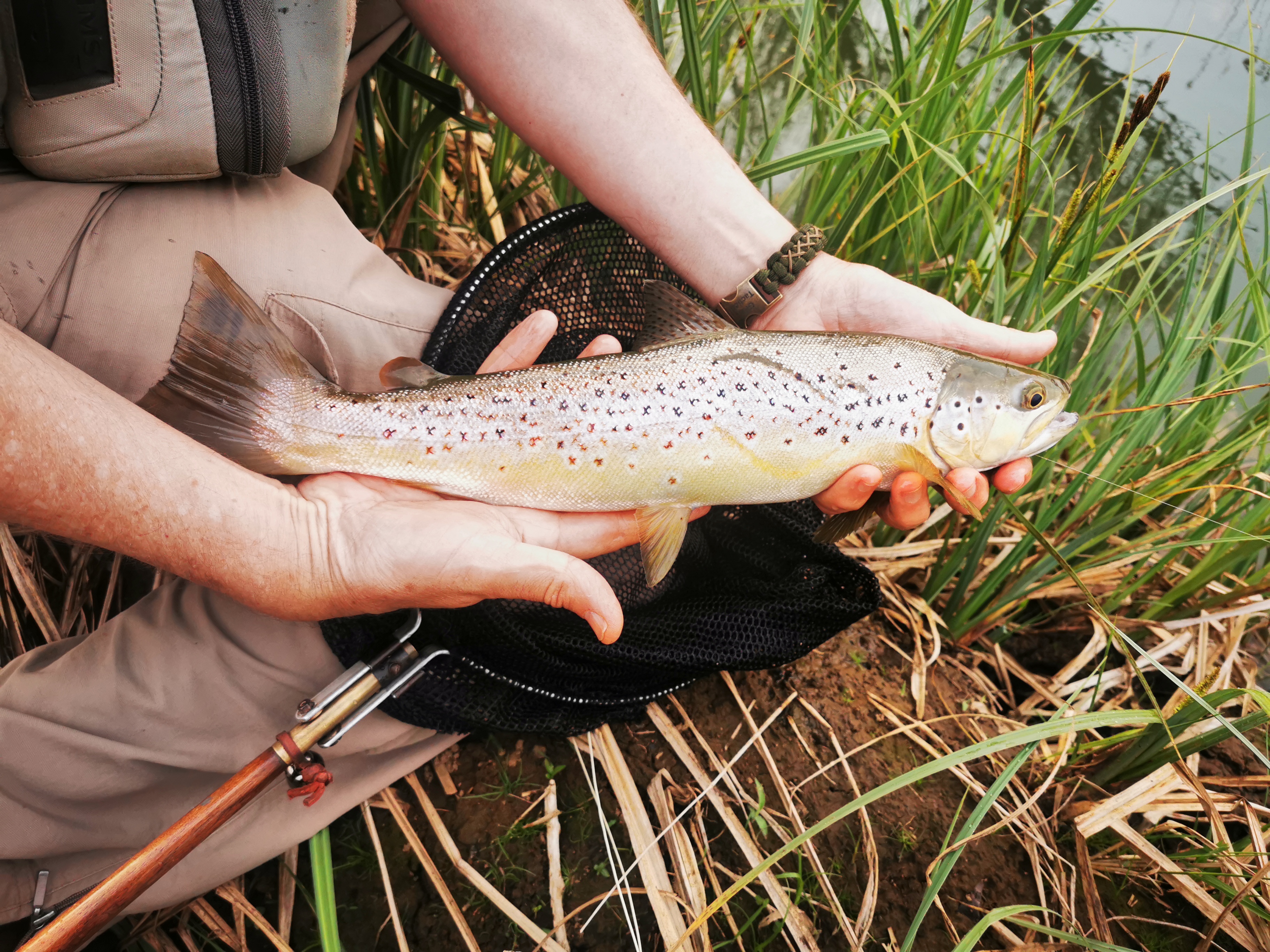
The thing is that back in PA, the guys decided that the Loch Levens were a different fish, that they were less inclined to cross breed with the butter bellied fish, and significantly, that they behaved differently.
EM Craighead had this to say about them, writing in 1947 (later incorporated in the book “Limestone Legends”)
“ Charles Fox caught some trout in Cedar Run in 1931 and thought at first that they were Browns, but the fish were heavily built and had other characteristics differing from the brown troutwith which he was familiar. ….he finally identified them as Loch Leven….Salmo lavensis….Charlies interest in these fish grew and he interested others…..Eggs of true Loch Leven trout were fist brought to the United States from the Howieton fishery…in 1884”
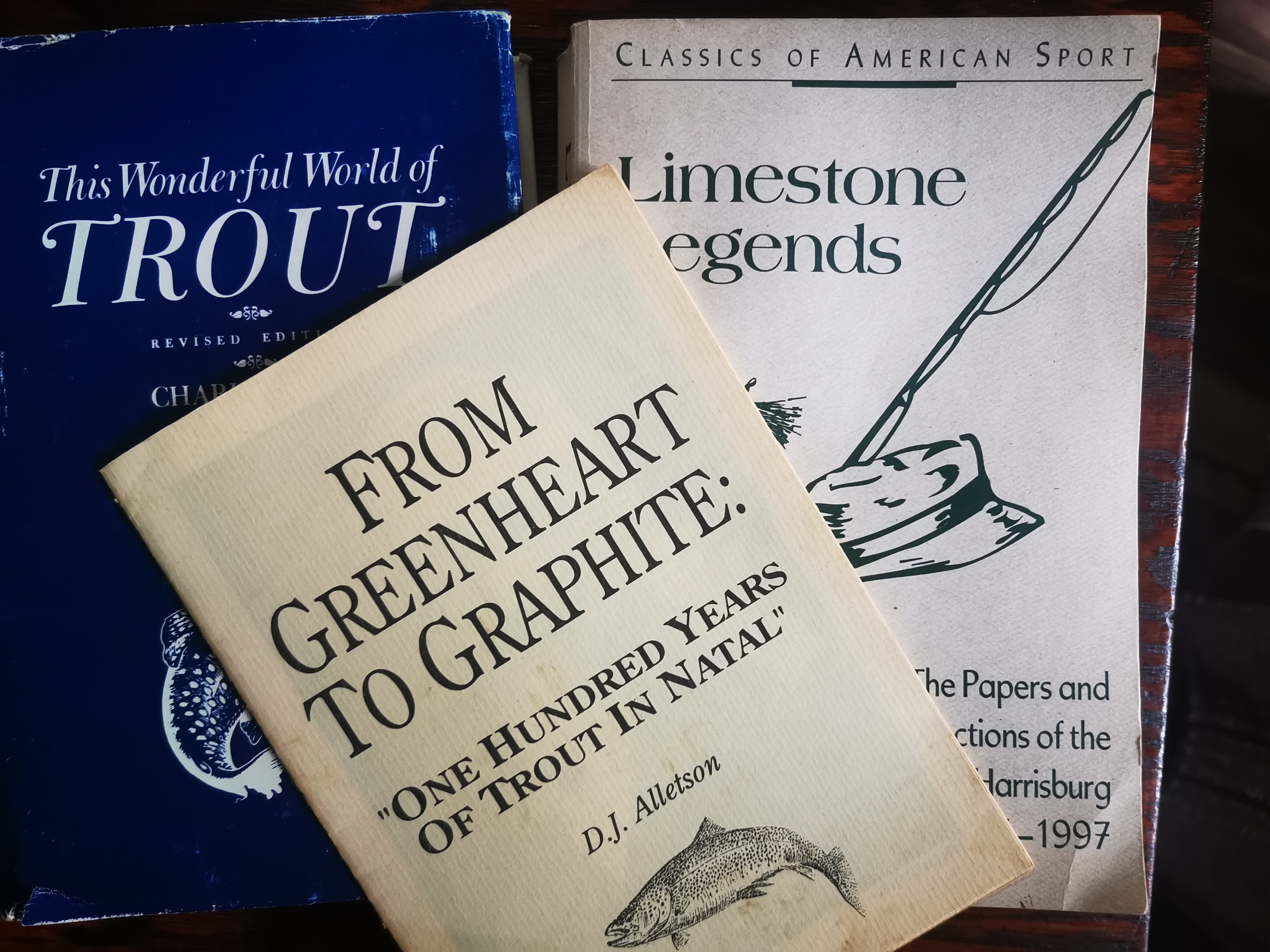
The defining difference was that they supposedly moved a lot more. The theory was that they would migrate downstream in spring, into the Conodoguinet Creek into which the Letort flows, and pack on weight there with big prey, before returning to the Letort. (The scientific term for this non-ocean migration is potamodromy )
In this way, anglers on the Letort were catching big Trout. And if they are to be believed, the big ones were always “Loch Levens”. The size of those fish suggested that they couldn’t be feeding exclusively on tiny midges and terrestrials , the imitations of which they were being caught on. Not all year round anyway. So the theory was, and to some, still is, that they migrate down to the big river after the lean winter/breeding period to go hunt for bigger food items. This lower water, where big food items may be on offer, has been referred to as “Frogwater” . Then when warm weather or breeding requires it, they move back up. In this way the big muddy river below, serves to produce great big Browns up in the fly-only, hallowed water, but could possibly contain no fish at all during mid summer warm periods.
“Other larger trout migrate upstream from wintering holes in the lower reaches of river, or to escape its midsummer temperatures. Such upstream migrants often make a given stretch of trout stream more productive than its basic fertility.” Says Ernest Schweibert in his seminal tome “Trout”.
But there came a point when the number of big browns being caught in the Letort was dropping off, and some put it down to the fact that bait and lure fishers down below in the Conodoguinet were knocking them on the head, so none were coming back.
Now this is a theory with a lot of problems. Apparently there is a waterfall on the Letort just before the confluence, which these fish might or might not be able to negotiate. Then there are the fisheries biologists who are not convinced. Add to that the geneticist who say there is no such thing as a “Loch Leven”, that they are all just Salmo Truttas and that colour and spot types could be thrown in any batch of hatched eggs.
But here’s the thing I can’t ignore.
A year or so ago, I was having a cup of tea with an old timer. He was a casual fly fisherman in his day, but a fly fisherman nonetheless. And when I related the story of an unsuccessful autumn day on the uMngeni down at Chestnuts, he said to me “oh well…the uMngeni is a spring river you know. Wait until September…we always did better then”.
I took note, but only mildly. But within six months, another old timer said exactly the same thing to me!

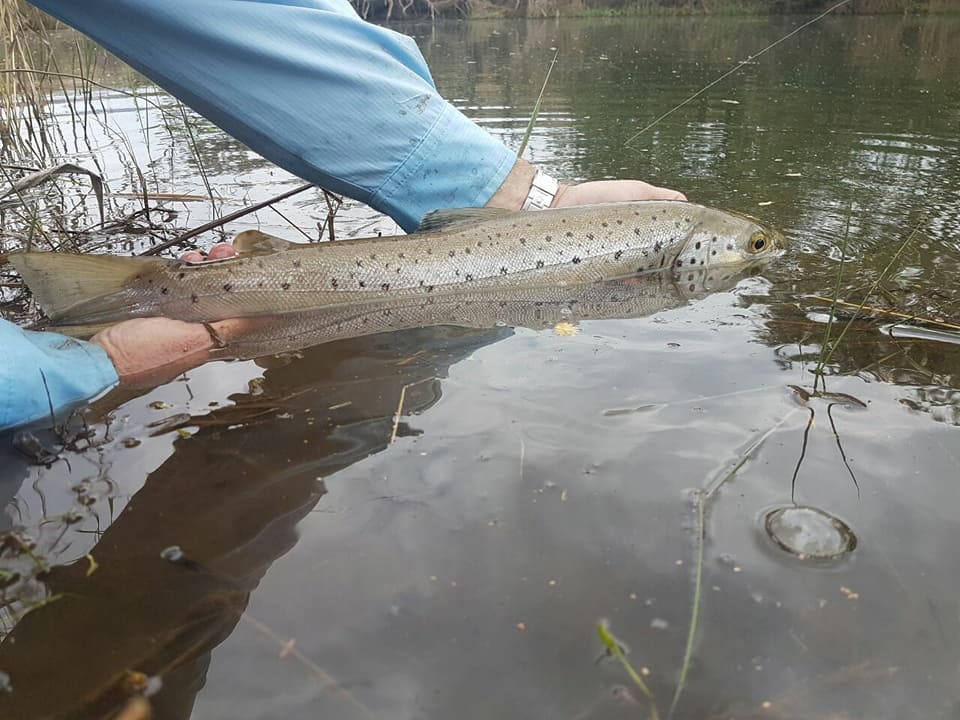
The uMngeni was one of the first two rivers to be stocked successfully with Browns in South Africa. More specifically 444 Loch Leven Brown Trout on Saturday 10th May 1890. (Ours came from Stolway, but interestingly they replaced an unsuccessful batch that came from the Howieton hatchery just 2 years before that 1884 batch that went to the USA.)
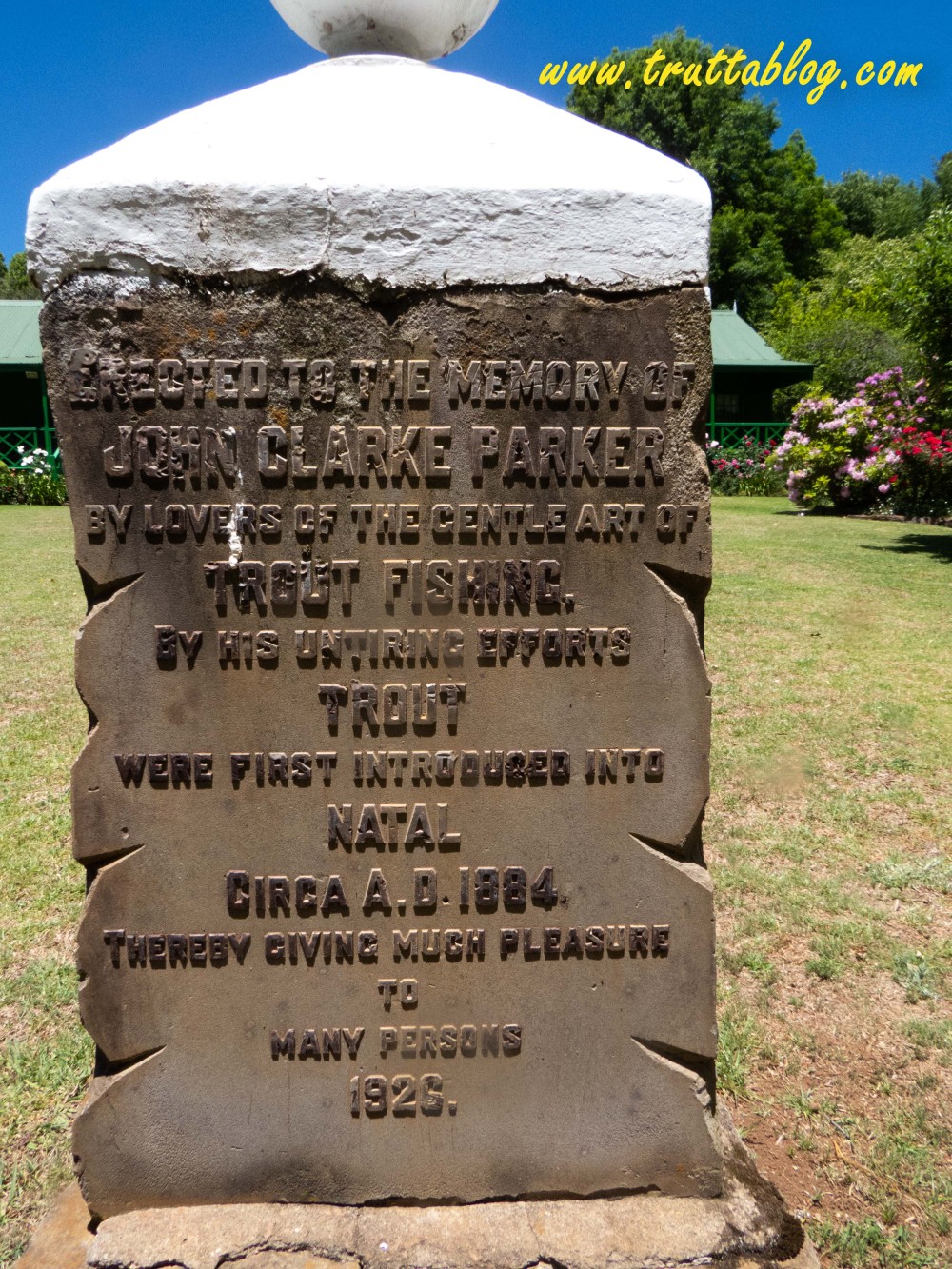
Then I contacted John Zazworsky of Trout Unlimited in the Cumberland river basin, and he confirmed “I have reliable knowledge that brown trout do pass up/over the falls to spawn each fall upstream in the LeTort. The same thing happens in other spring creeks feeding the Con.”
The other thing I did was to overcome my apathy and order a copy of “Limestone Legends” from the states. When that arrived I poured over its pages hoping to find more than just Charlie Fox’s theory of the “Super Trout”, but I struck out. (I don’t regret buying the book…it is a gem!)
So I went back to some more Google work and discovered that while genetic differences between members of Salmo Trutta may not have been in evidence when genetics was still being refined, studies as recent as 2018 and 2019 start talking about “SNP’s” being indicative of migratory behaviour. (SNP…Single Nucleotide Polymorphisms) I learned that when Browns’ fat levels (lipids) decrease, their tendency to migrate downstream increases. The website of the Wild Trout Trust in the UK contains this quote from Andy Ferguson dated 2019 :
“….whether to migrate or remain as a resident is a balance between the benefits and costs. An individual [Trout] has no way of assessing these directly but its decision is informed by its genes, which have been shaped by the experiences of its ancestors through natural selection, together with current environmental conditions. Overall genes and environmental factors contribute about equally to the variability in migration versus residency in trout. The principal environmental factor involved is feeding quantity and quality. If an individual’s nutritional status, especially the amount of energy stored as fat, is below a genetically determined threshold level the individual migrates to find better feeding. If above the energy status threshold it remains in the stream. “
I also learned from an academic paper, that Trout with severe lipid depletion will migrate downriver and then stop as soon as they find food. That sounds like desperation to me, but it highlights that if they find good food they will stop and stay and eat, rather that shooting for the sea (which in the South African context would be fatal)
So the idea of going downstream to look for other food items is not just conjecture or fisherman’s theory.

Then I caught an 18 inch brown right up at the top of the the uMngeni. And then someone sent me a picture of four great big browns caught on spinner down in the lower river in September.

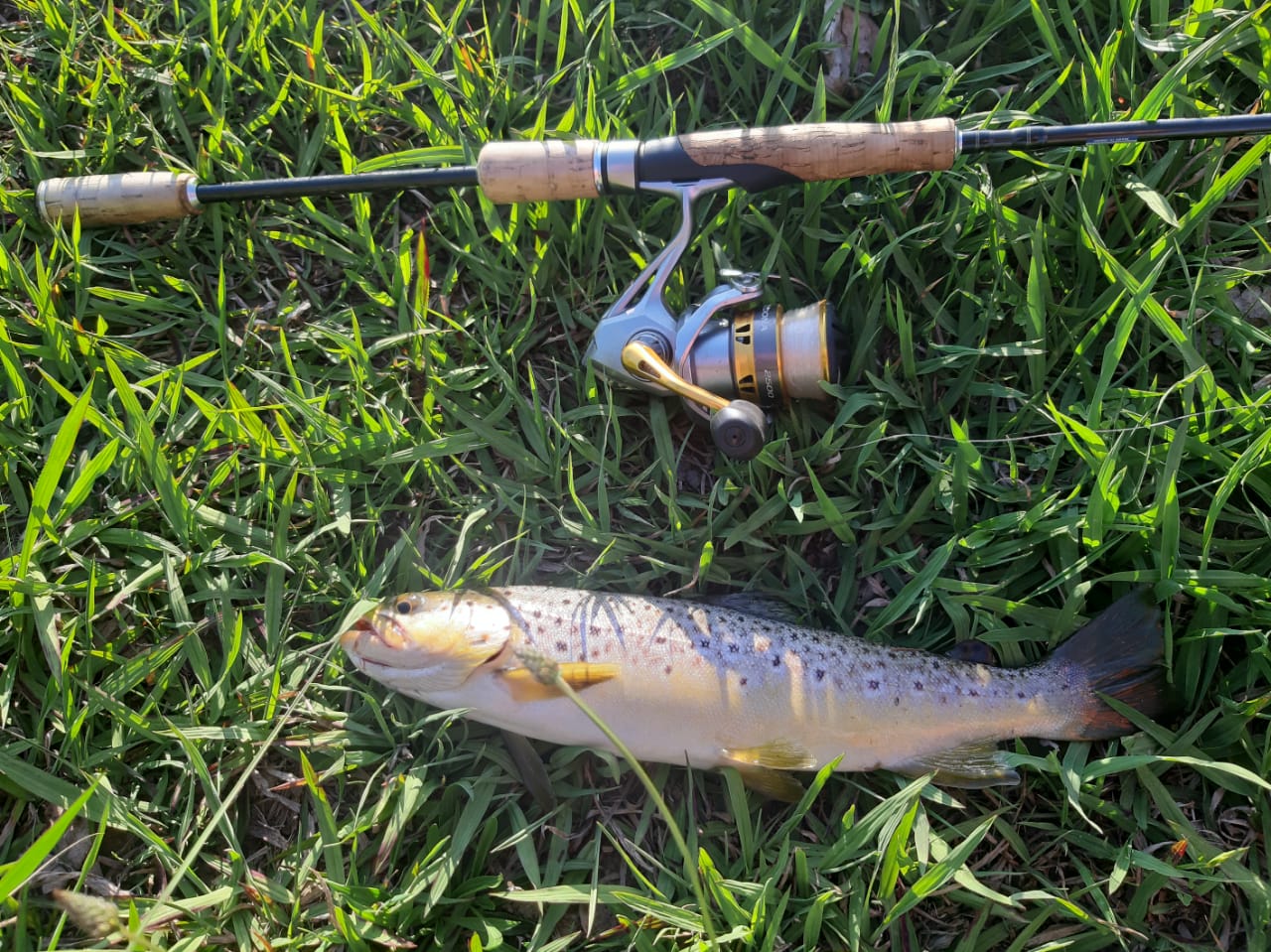
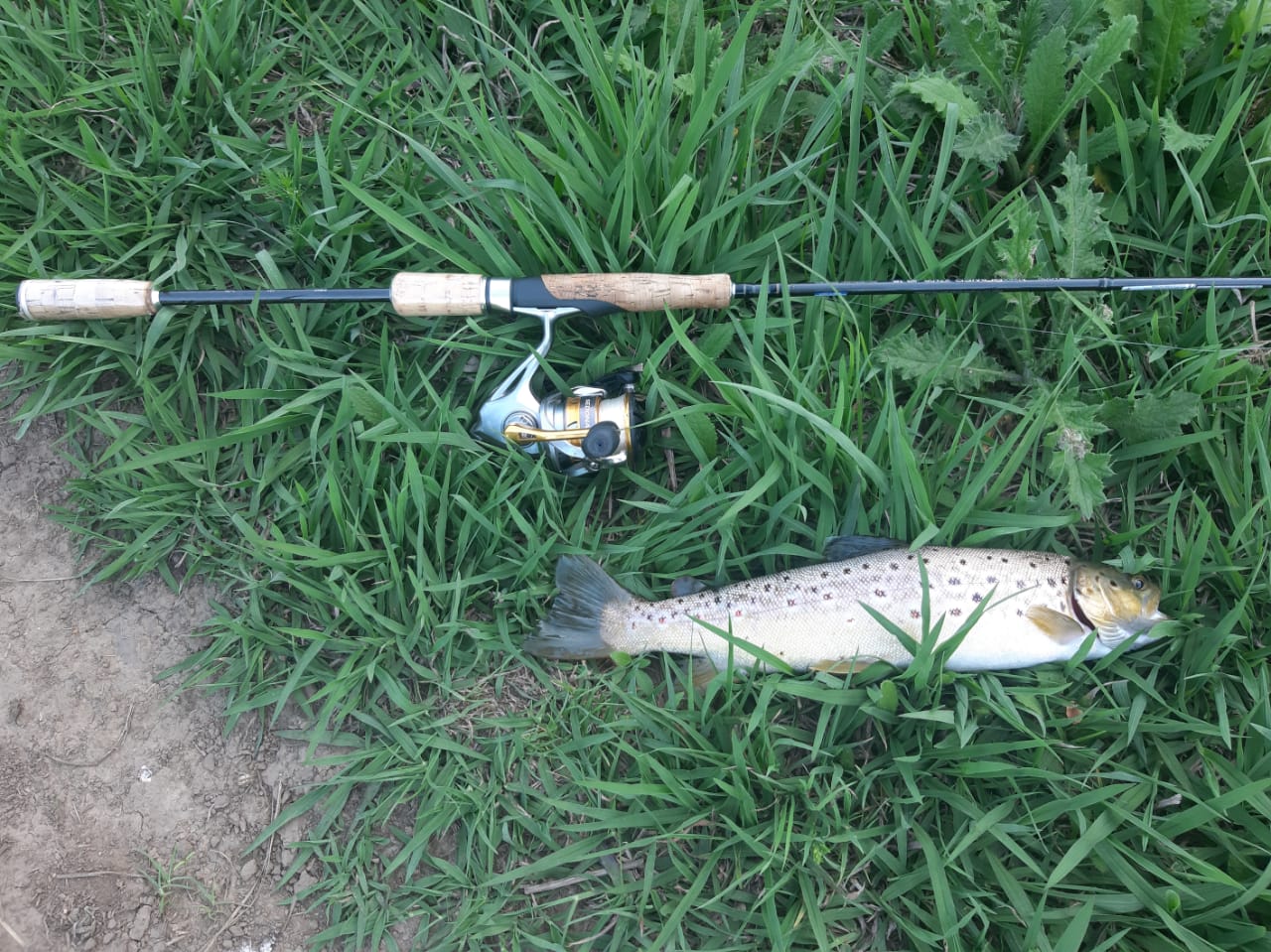
Then some farm workers reported seeing some very big Browns at Chestnuts in September last year. And then I went and fished Chestnuts in the spring, and landed some good fish, and missed a lunker that still has my knees shaking. Tom Sutcliffe, in a recent conversation, recalled how Taffy Walters had a theory about big fish going downstream to eat frogs.
And eventually, my brain kicked into gear, I joined some dots, and I said “Hang on a minute!”
To hell with an old sceptical fisheries biologist in Pennsylvania…I love a good Trout theory!
So here it is. I have long said that “three quarter mile pool” on Knowhere is holding water for big browns in times of low water. Our catches there go some way in proving that. (I got another 18 incher there this spring) I am now adding to that all the big pools that stretch some 4.6 kms further downstream (including Chestnuts), as “spring holding water” or “Frogwater”. It is bigger and slower down there. It gets muddy in summer, but there is more holding water in times of low flow (September). If you were a big hungry, post-spawning brown, who was lean and hungry, and you wanted to go where there was big, calory packed food, and more cover, I reckon you would swim down there too. You know, go grab some big food that falls into the river amongst the shady poplars…some chickens, a wayward child, that sort of thing. It is possible that you would be more inclined to do this if you were a Loch Leven brown……
“However well you know a piece of water, there are always places, deep holes and eddies, which seem full of mystery, where you pause and gaze into the water with wonder, often with awe, and sometimes with fear” JC Mottram, 1915
So why might this be significant. Well obviously it means you know where to go hunt lunkers in spring. But there is a more significant side to this. In Pennsylvania, there were moves afoot to make the Conodoguinet, down where the bait fishers have sway, a catch and release water for Brown Trout. This was to preserve the big fish so that they could migrate up into the Letort where they could breed and perpetuate the big-fish genetics. (and for the benefit of the flyfishers upstream!) . And for a long time the pollution of the Letort below the town of Carlisle was cited as a reason for the demise of the fishery upstream (Reference: Limestone Legends) It stands to reason that apart from trying to influence wayward bait and lure anglers on lower water, one should work to preserve that environment down below, just as much as one does on the more popular upper water where most flyfishing happens.
In the context of the uMngeni: Is it possible that the preservation of good water conditions between the Dargle falls (the lowest extent of the Trout water) and say Knowhere (Three quarter mile pool) , might be critical to sustain the population of large, effective spawners, and of course to add the excitement of big fish possibilities upstream on the more dainty water?
“An angler that understands this, who has picked up the rhythms of the trout and the stream in their movements is the angler that consistently catches the largest Wild Brown Trout in that area and more than likely has that reputation” Eric Richard, Coveted Waters blog.
In that context, we would be wise to continue to pay attention to the care of our lower stretches of the river….the less popular stretches. It might also trigger some enthusiasm for fishing these reaches in the spring, when fish are harboring there while the water begins to warm, and their post-spawning voracity is potentially at its peak.
So what does “more attention” look like?
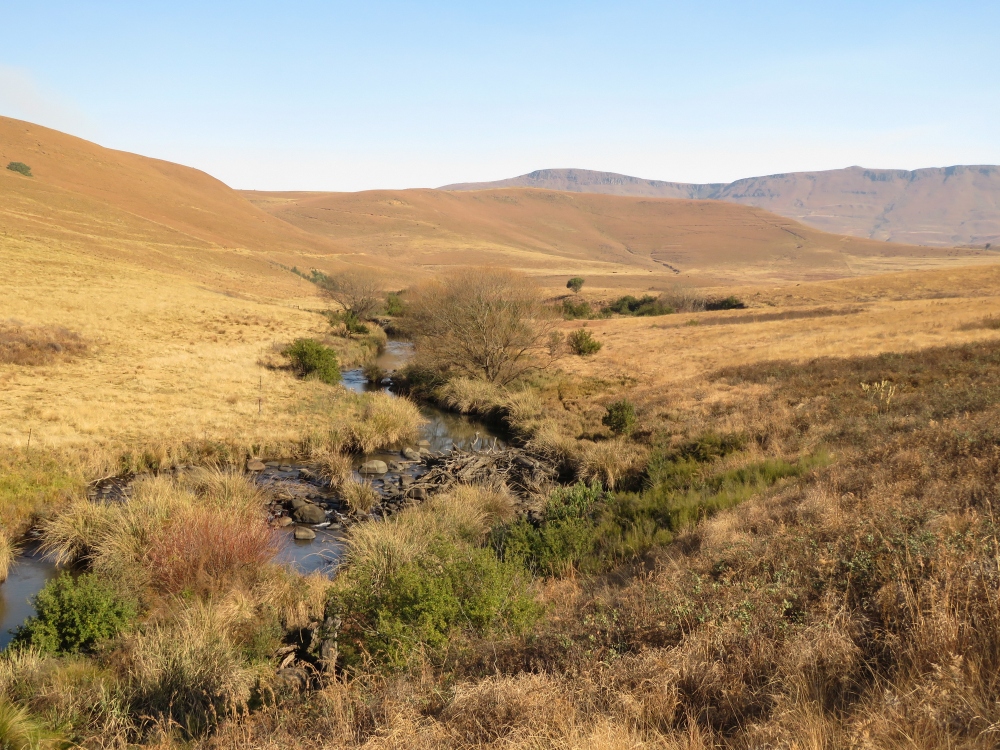
Biodiversity in the stream is aided by an absence of monoculture wattle, preservation of a healthy riparian zone (wide enough and allowed to get tall and a little messy) , reduced silt through good basal cover and controlled drainage of hard areas (roads and sheds), minimisation of diffuse agricultural pollution (nitrification through fertilizer leaching, slurry dams etc), and removal of any logjams that may impede migration.
I also consider the fact that I “confiscated” a spinning rod, that I found hooked into a bankside tree a few months ago, to be part of “more attention”.

These are all things we have been striving for further up on the uMngeni. I contend that these things are no less important on our lower waters, even through the eyes of a small stream flyfishing fanatic.
This thinking would be consistent with our attempts in recent years to conquer the big Trout reported to frequent the Bushmans down on Rockmount and other beats, where the river is big and screams “Big Trout!” to anyone who has a sense for these things.
In that context: on a litter pickup day on the Bushmans some years ago, fly fishers found that the clinic at the lower boundary had a non-functioning sewage plant spilling directly into the river. At the time, some of us, and I include myself in this, expressed our disgust but then turned a blind eye, reasoning that we have enough to contend with up in our managed section, and this would surely affect us little.
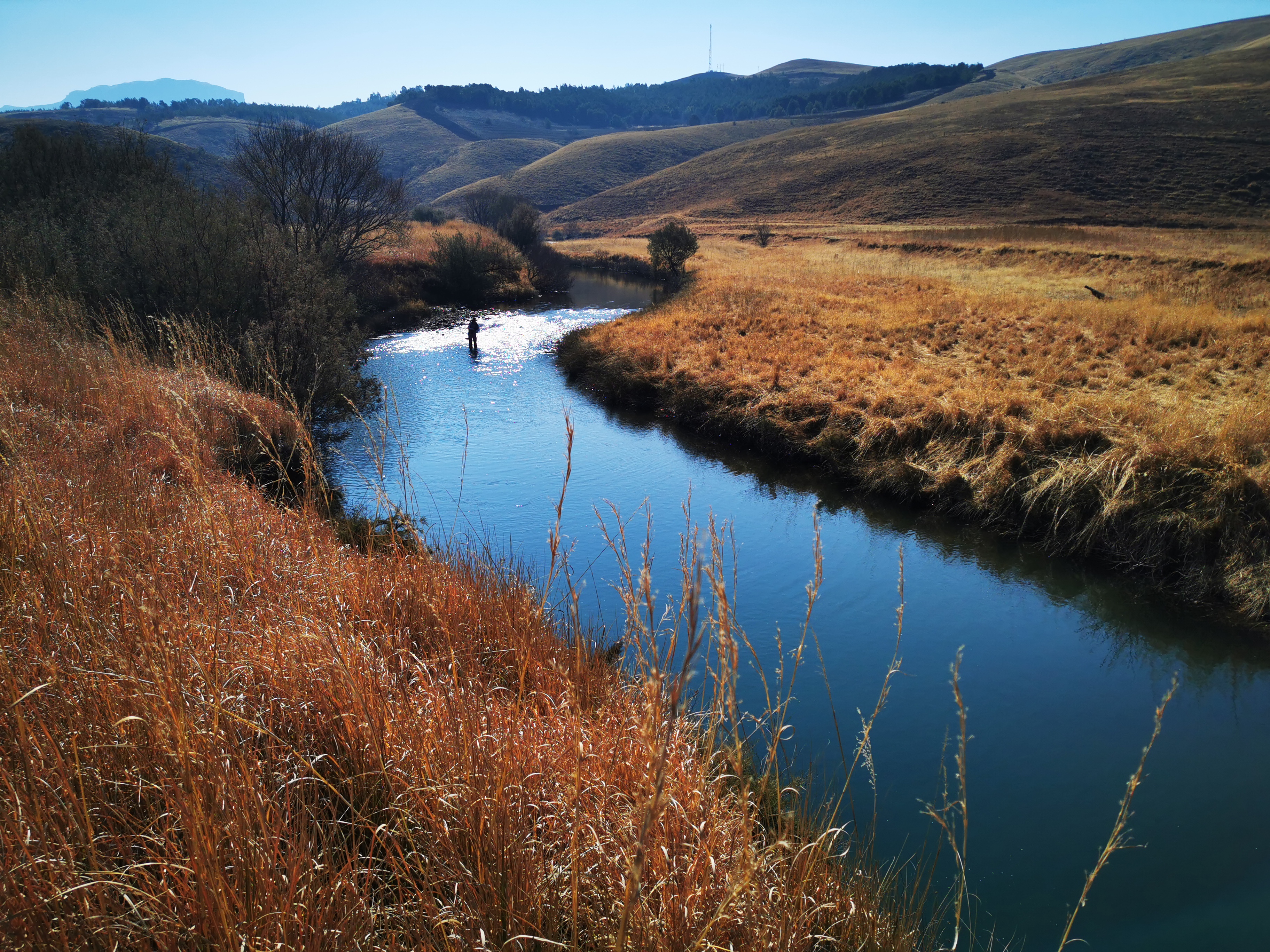

Back to the uMngeni. In the winter of 2021, the banks of the river extending for 4.2 kms up from the Dargle Falls were largely cleared of wattle by my own outfit “Upland River Conservation”, using fundraising money. Then in October 2022 a project funded by PepsiCo included two small cliffs opposite Chestnuts, where trees were felled off the severe slopes and re-grassing was conducted. As I write this, I have just returned from inspecting a project site, funded by an American corporate where we are permanently converting previous pine plantations to grassland, some of it actually overlooking the river.
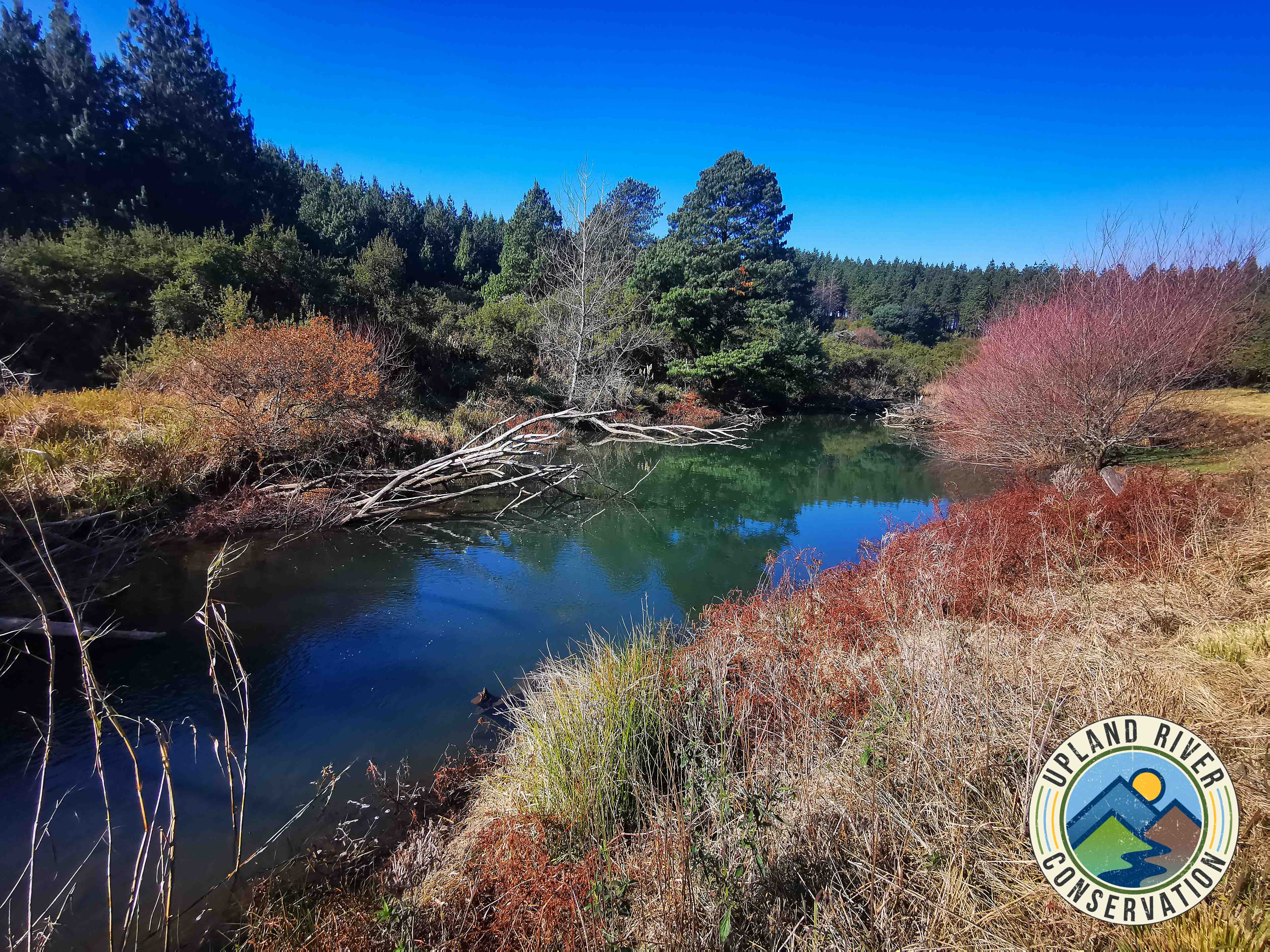
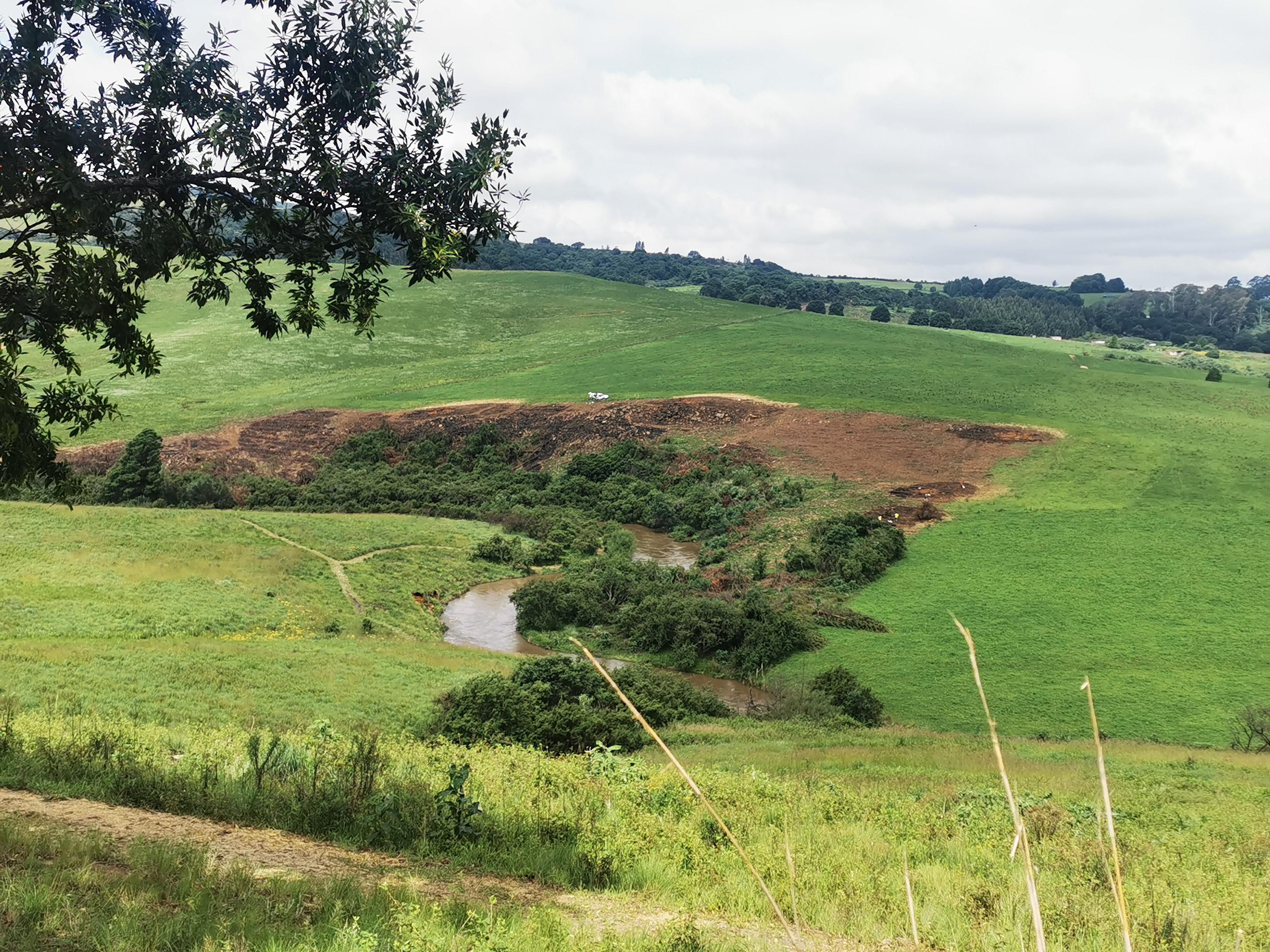
This should have a measurable effect on reducing silt load. In our sights, but requiring funding, is road drain modification at an identified pilot site on the Dargle Impendle road. This site is a good test case, and could provide a blueprint that would allow drainage modifications on gravel roads to reduce silt load entering rivers throughout the greater uMngeni catchment and elsewhere.
I had a chat with Duncan Brown the other day, and I told him of my theory. I had mistakenly ascribed a quote in his book “Are Trout South African” about loch Leven genetic purity to the uMngeni, but in fact it was another river. “But have you had genetic analysis done?” he asked. I haven’t, but that is next on the list. My interest was also piqued by a chat I recently had with Dean Riphagen in which he told me of his Trout tagging exploits on the Western Cape streams when he lived down there in the eighties.
Two farmers on these river banks have adopted regenerative farming practices, which significantly reduce the application of granular fertilizers, and adopt pasture species diversity in the interests of soil health. We would love to add to that some better care of some of the small, but critical wetlands and flood areas adjacent to the river, and I think a management plan for the riparian zones would go a long way. We want tall indigenous bankside vegetation harbouring biodiversity, but not without occasional burning, because without burning we would get poor basal cover.
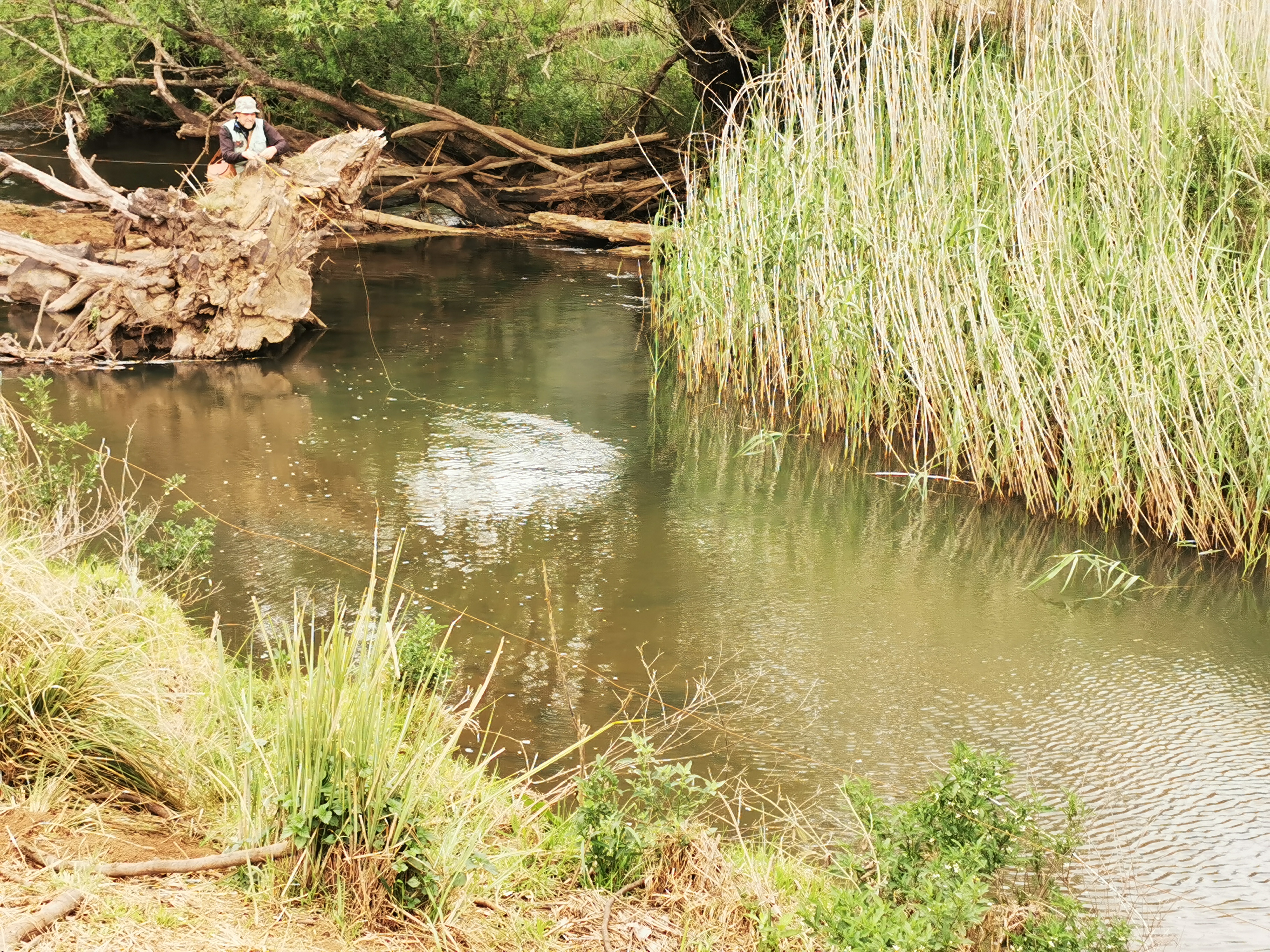
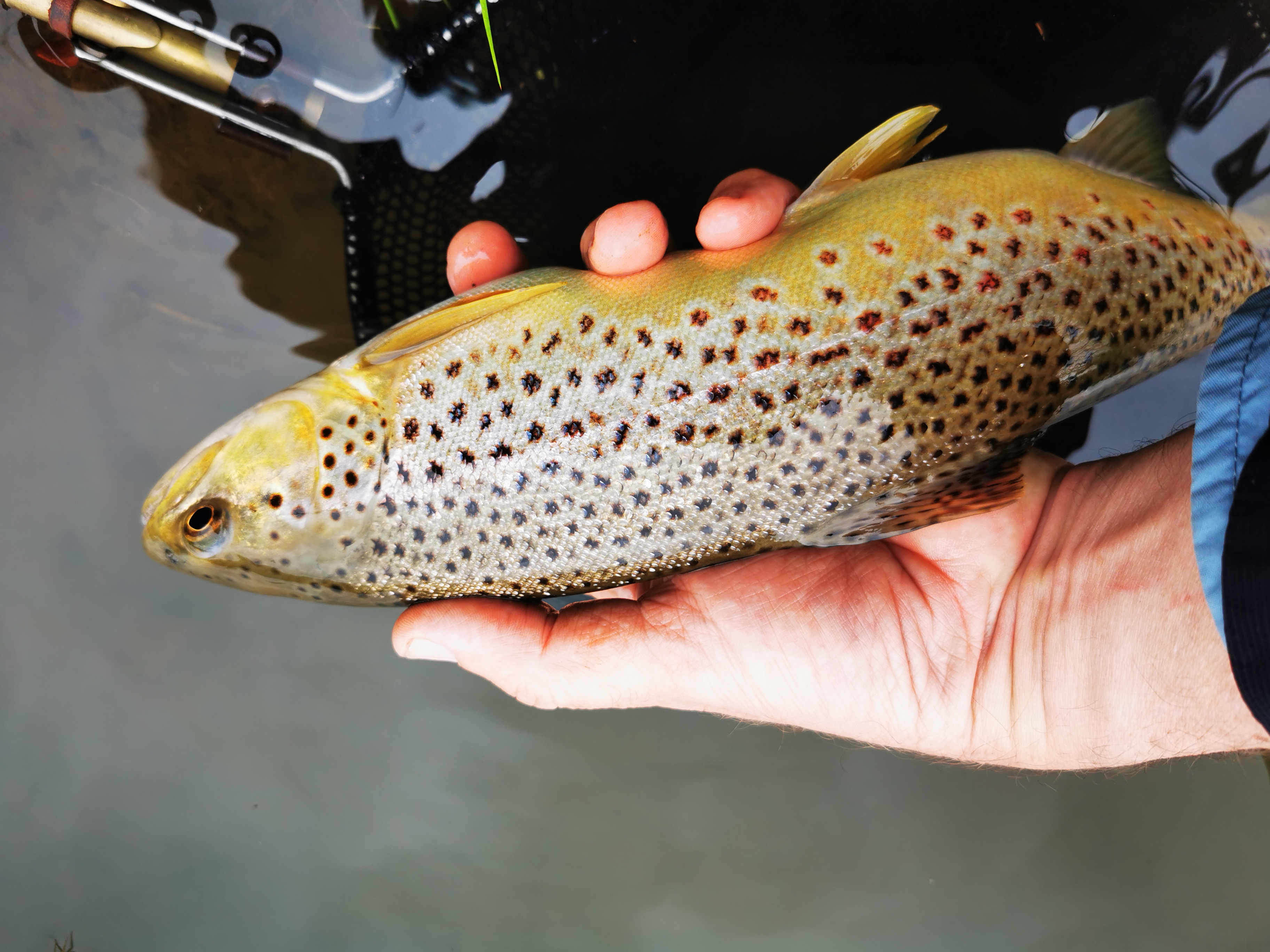
So another angle on this, is that when anglers complain that Chestnuts is too difficult to fish, due to tall reeds, steep banks and swampy areas, we should just nod, leave them behind, and go fish the place in spring.
Perhaps we should take a genetic sample kit. Maybe some Trout tagging stuff……
If this interests you, and you want to go big Trout hunting, do get in touch.

3 Responses
Hi Andrew:
Fascinating article. You may be interested to know that this triggered several pages of discussion on the Pennsylvania fly fishing forum: https://www.paflyfish.com/threads/letort-and-the-umngeni.81921/page-3…
By the way, is Jake Alletson’s book in the photo in your article still in press? I looked but couldn’t find it…
Cheers
Conrad
Thanks Conrad….an interesting (and fiery!) read. That “Greenheart to Graphite pamphlet of Jake’s is out of print and quite hard to come by. I haven’t seen one in a second hand book store for many years.